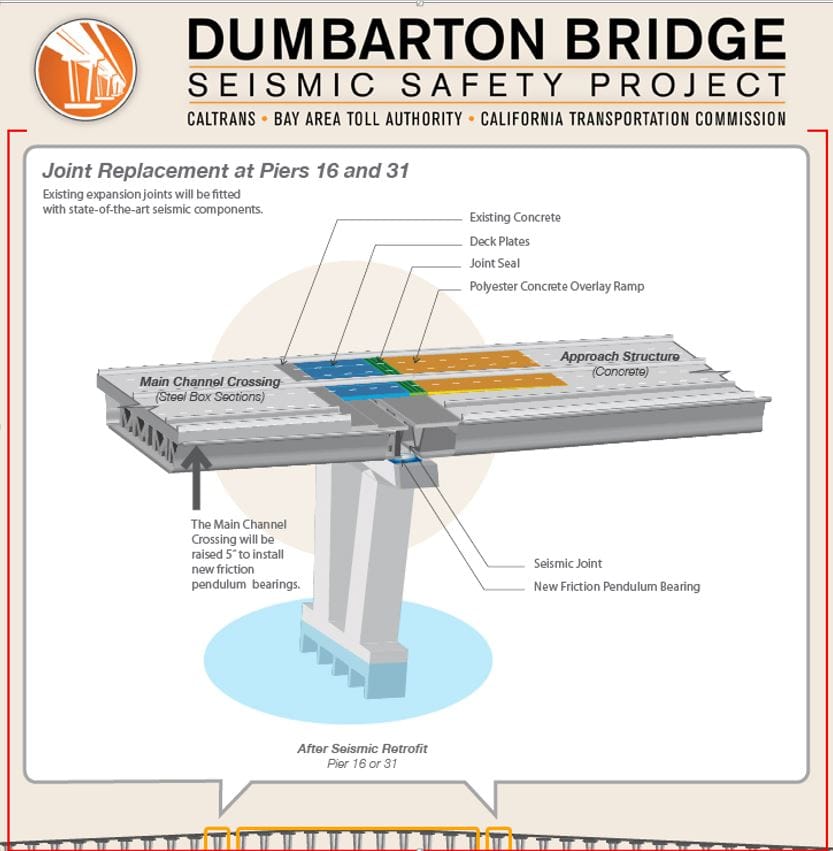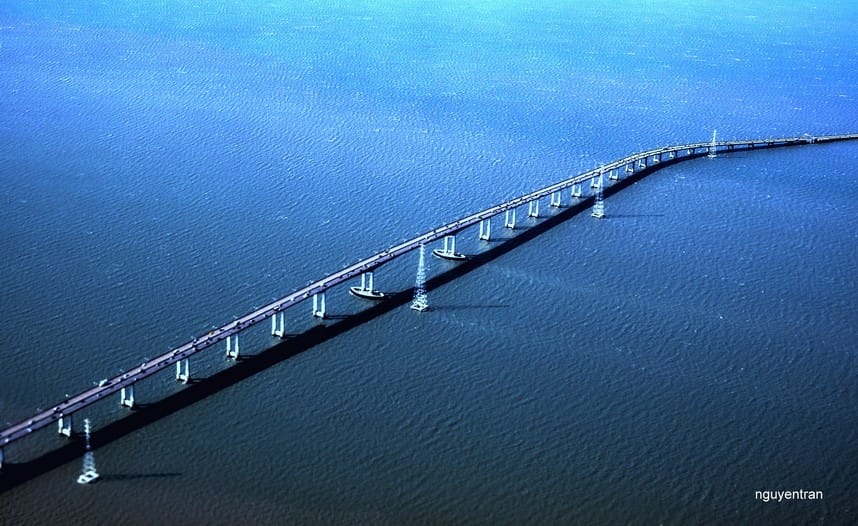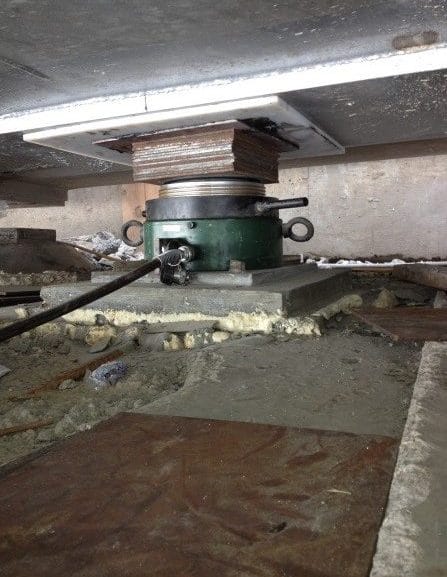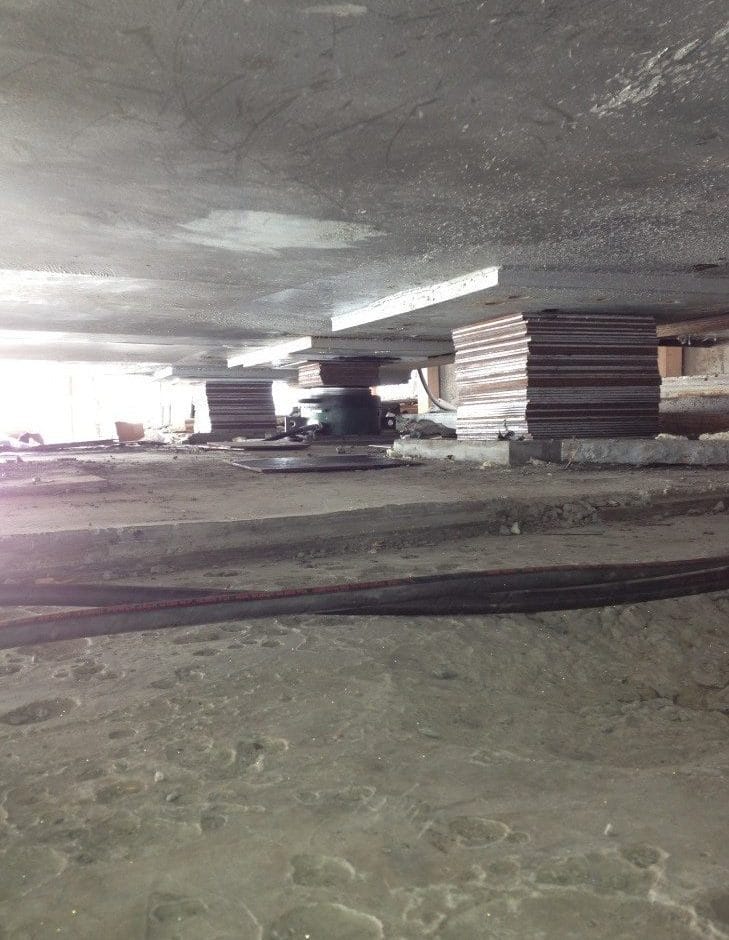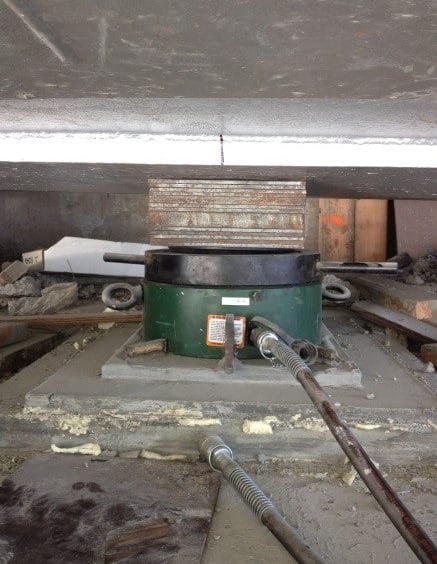Dumbarton Bridge
Shimmick Construction came to C. H. Bull Company as they prepared to bid on the Dumbarton Bridge Seismic Safety Project. As they explained the scope of the work with Stan Sheppard, our high tonnage jacking specialist, he realized this job was going to require something we had never done. They were going to need a system capable of lifting 32,000 tons (64,000,000 pounds) from up to 96 jacking points. The jacking system was to be used to raise the main channel crossing section of the Dumbarton Bridge, allowing Shimmick Construction to earthquake retrofit, level and then repave the bridge over two 3 day bridge closures.
The challenge was to be able to quickly cycle the Simplex low profile (7-1/2” collapsed height) locknut, single acting, load return, 300 ton and 400 ton jacks. Some of the jacks had to be cycled 5 times to level the bridge. It was Isaac Newton that said – ‘What goes up must come down’. Well good old Isaac never used 300 and 400 ton load return jacks.
As they jacked up the bridge inch by inch, they would use the locking collar on the jacks to hold the load while they would “crib” the load with steel plates. Once the steel plates were in place they would release the locking collar but because these were load return jacks, and they had no load on them, they would not retract.
C.H. Bull designed a vacuum retracting system that can fully retract eight 400 ton locknut jacks in less than 7 minutes. Being able to quickly advance and retract the jacks as many as five times allowed Shimmick Construction enough time to complete the rest of the work required during the closures.

